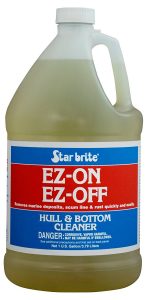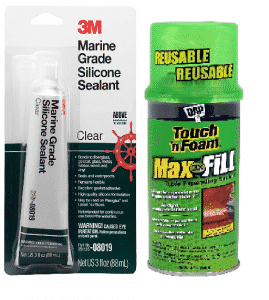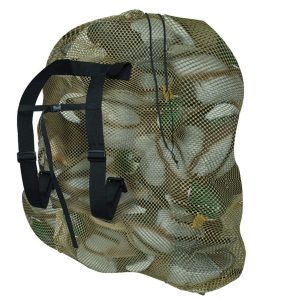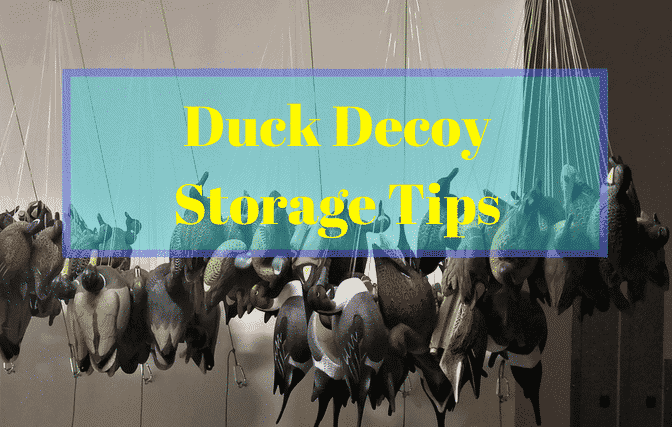Maintaining and storing your duck decoys is a major part of waterfowling. Once you start to get a large number of blocks the work starts to add up. Your overall maintenance and storage is going to depend on what type decoys you have and what they’re made out of. At the end of the waterfowl season it seems like storage is the last thing I want to think about, but that’s asking for trouble. Thankfully the days of me just throwing my decoys into my barn are behind me. As soon as the seasons over I start thinking about repair and long-term storage.
Cleaning Your Decoys Before Storage
 Before you can think about storing your decoys you need to make sure they get cleaned up and repaired. At the end of a long hunting season decoys are usually covered in a little bit of everything. Exposed to dirt, mud, algae and everything in between, decoys tend to start looking a little bit rough. Mud is especially difficult to get off your decoys since it tends to stick like glue. Always try and remove mud when it’s fairly fresh and do a final cleaning at the end of your season.
Before you can think about storing your decoys you need to make sure they get cleaned up and repaired. At the end of a long hunting season decoys are usually covered in a little bit of everything. Exposed to dirt, mud, algae and everything in between, decoys tend to start looking a little bit rough. Mud is especially difficult to get off your decoys since it tends to stick like glue. Always try and remove mud when it’s fairly fresh and do a final cleaning at the end of your season.
To clean my decoys, I like to use a marine grade algaecide. Try and find a heavy duty algaecide like they use to clean the bottoms of boats. A little bit of Star Brite Hull and Bottom Cleaner will make for some quick cleanup. Just brush on the Star Brite cleaner wait a few minutes and hose it off. You won’t have to spend your time scraping dried up mud and algae.
Do Some Basic Repairs
 When it’s time to repair your blocks take them all out of their bags and inspect them thoroughly. Make a few piles of all of your wounded “dekes” and set them off to the side. Separate all of your decoys that are missing strings and anchors into one pile and those with holes and cracks into another. After a few years you might even want to have a third pile of decoys with chipped and missing paint.
When it’s time to repair your blocks take them all out of their bags and inspect them thoroughly. Make a few piles of all of your wounded “dekes” and set them off to the side. Separate all of your decoys that are missing strings and anchors into one pile and those with holes and cracks into another. After a few years you might even want to have a third pile of decoys with chipped and missing paint.
To repair my decoys I like to use a combination of marine silicone caulk and spray foam insulation. For small cracks use a little bit of marine grade sealant on a putty knife. Whenever there is a large crack in your decoy spray in a little bit of foam insulation. Completely fill the inside until you see the foam coming up and out the hole. From there on out that duck won’t sink no matter how you treat it.
Duck Decoy Storage Tips
Once you have all your cracks and lines repaired storage isn’t all that difficult. A lot of people take their decoys, put them in a bag and toss them up into their attic, but that isn’t the right way. At the end of the year, when you take them down, they’re going to be all scraped up and damaged. The paint starts to scrape off due to the extreme attic heat and winter temperature change. With such a large fluctuation paint starts to break down on the plastic.
Instead of storing your decoys up in the attic store them with a little bit of ventilation. Try to keep them away from damp and moldy basements that are going to cause damage.
 After doing all my cleanup and repairs, I store my decoys in one of these budget Mossy Oak Whistling Wing Decoy Bags. The mossy oak bag is large enough to hold a ton of deeks and sturdy enough to withstand a little bit of damage. The mesh allows for adequate ventilation so that you won’t have to worry about your decoys getting all nasty when you bring them out next hunting season.
After doing all my cleanup and repairs, I store my decoys in one of these budget Mossy Oak Whistling Wing Decoy Bags. The mossy oak bag is large enough to hold a ton of deeks and sturdy enough to withstand a little bit of damage. The mesh allows for adequate ventilation so that you won’t have to worry about your decoys getting all nasty when you bring them out next hunting season.
Most years I store my decoys in my attached garage hanging up on wall hooks. Just make sure you keep them out of direct sunlight that can cause damage to the paint and plastic. I ruined a few brand new decoys by storing them next to a large window in my pole barn. After a few months in the sun they started to fade really badly.
Watch Out For Mice
Keep an eye out for pests in your storage area. Mice rats and squirrels all love to chew up and destroy foam decoys. Hanging your bags up on hooks should help reduce the risk of pests destroying your decoys.

